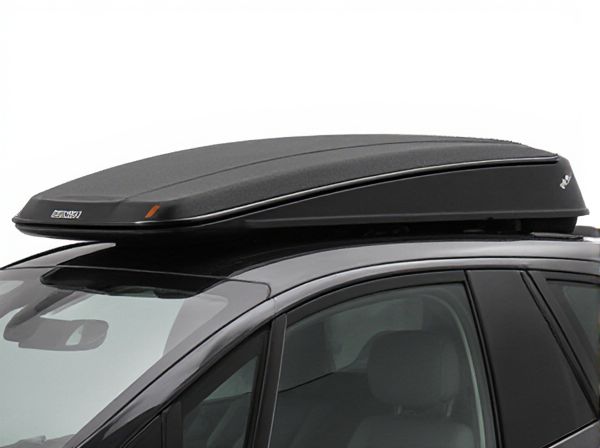
Photo illustration: Pop-up Roof vs Sliding Roof
A pop-up roof offers increased headroom and ventilation by raising the entire roof section, making it ideal for camping and extended stays. A sliding roof provides a sleek, space-saving option that allows you to open a portion of the roof for fresh air and light without altering the vehicle's overall height. Choosing between these roofs depends on your need for interior space versus ease of use and vehicle aerodynamics.
Table of Comparison
| Feature | Pop-up Roof | Sliding Roof |
|---|---|---|
| Operation | Manually or electrically lifts vertically | Slides horizontally along roof rails |
| Ventilation | Enhanced airflow with open sides | Partial ventilation with sliding panel |
| Space Usage | Increases vertical interior space | Maintains low roof profile |
| Weather Protection | Good, but requires sealing when closed | Excellent sealing and water resistance |
| Installation | Simpler, ideal for camper conversions | Complex, requires integrated roof mechanisms |
| Cost | Generally more affordable | Usually higher-priced |
| Noise | Less aerodynamic, more wind noise when open | Quieter at high speeds |
| Common Use | Camper vans, off-road vehicles | Luxury and passenger vehicles |
Introduction to Pop-up Roofs and Sliding Roofs
Pop-up roofs feature a hinged section that lifts vertically to create additional headroom and ventilation, making them ideal for camping and outdoor activities. Sliding roofs, or sunroofs, operate by sliding a panel back into the vehicle's roof, offering open-air experience and natural light without altering the vehicle's interior space. Both designs enhance vehicle versatility but cater to different user needs--pop-up roofs prioritize space expansion, while sliding roofs focus on seamless openness.
Key Differences Between Pop-up and Sliding Roofs
Pop-up roofs elevate vertically, creating additional headroom and ventilation without altering the vehicle's length, while sliding roofs retract horizontally, offering an open-air experience by sliding back over the existing roof. Pop-up roofs typically provide better insulation and are favored for camping due to their increased interior space, whereas sliding roofs are preferred for quick airflow and unobstructed views while driving. The key differences lie in their mechanisms, space enhancement, and usage scenarios, making pop-up roofs ideal for prolonged stays and sliding roofs suitable for everyday ventilation.
Advantages of Pop-up Roofs
Pop-up roofs offer superior ventilation and increased headroom, enhancing comfort during camping or travel. Their lightweight design improves fuel efficiency compared to traditional sliding roofs. Pop-up roofs also provide better insulation and noise reduction, making them ideal for various weather conditions.
Benefits of Sliding Roofs
Sliding roofs offer enhanced ventilation and natural light control, improving cabin comfort and air circulation in various weather conditions. Their sleek design provides unobstructed views and a modern aesthetic while maintaining structural integrity and weather resistance. Compared to pop-up roofs, sliding roofs often feature easier operation and better noise reduction, making them ideal for daily use and long journeys.
Durability and Maintenance Comparison
Pop-up roofs typically feature simpler mechanical systems with fewer moving parts, resulting in greater long-term durability and lower maintenance requirements compared to sliding roofs, which include complex tracks and motors prone to wear and damage. Sliding roofs may offer enhanced ventilation and convenience but demand regular lubrication, track cleaning, and motor inspection to prevent operational failures and water leaks. Evaluating these factors, pop-up roofs often provide more reliable performance and cost-effective upkeep for vehicle owners prioritizing durability.
Installation Process: Pop-up vs Sliding Roof
The installation process for a pop-up roof typically involves securing a foldable frame to the vehicle's existing roof structure, often requiring cutting or modification to fit the base. In contrast, a sliding roof installation demands precise alignment and sealing of the sliding tracks onto the roof panel, ensuring smooth operation and weather resistance. Pop-up roofs may offer easier retrofit options, while sliding roofs often require professional installation due to their complex mechanical components.
Space and Comfort Considerations
Pop-up roofs maximize vertical space by providing additional headroom when extended, making them ideal for standing or moving around inside, especially in camper vans or recreational vehicles. Sliding roofs offer a more seamless integration into the vehicle's original structure but provide limited vertical space, prioritizing open-air ventilation and light without expanding the interior volume. Comfort in pop-up roofs centers on increased mobility and air circulation inside, whereas sliding roofs emphasize a compact design with easy access to fresh air and natural light.
Cost Analysis: Pop-up Versus Sliding Roof
Pop-up roofs typically incur lower initial manufacturing and installation costs compared to sliding roofs, making them a budget-friendly option for many vehicle owners. Sliding roofs, due to their complex mechanisms and enhanced sealing features, generally require higher maintenance expenses and potential repairs over time. Cost analysis reveals that while pop-up roofs are economical upfront, sliding roofs offer better durability and resale value, justifying their premium price in the long run.
Best Use Cases for Each Roof Type
Pop-up roofs are ideal for camping enthusiasts who value quick setup and maximum headroom, making them perfect for extended outdoor adventures and overlanding trips. Sliding roofs offer superior ventilation and an open-air experience, best suited for urban driving and scenic road trips where comfort and airflow are priorities. Choosing between pop-up and sliding roofs depends on the balance of space efficiency, ease of use, and desired outdoor exposure.
Choosing the Right Roof for Your Needs
Choosing the right roof for your vehicle depends on your lifestyle and usage preferences; pop-up roofs provide versatility and extra headroom, ideal for camping and extended stays, while sliding roofs offer seamless ventilation and a sleek design suited for daily driving. Consider factors such as ease of operation, weather protection, and space requirements--pop-up roofs typically require manual setup but offer better insulation, whereas sliding roofs can be operated with a switch but may have limited openings. Assess your priorities regarding comfort, functionality, and maintenance to determine whether a pop-up or sliding roof aligns best with your driving habits and needs.
 caratoz.com
caratoz.com